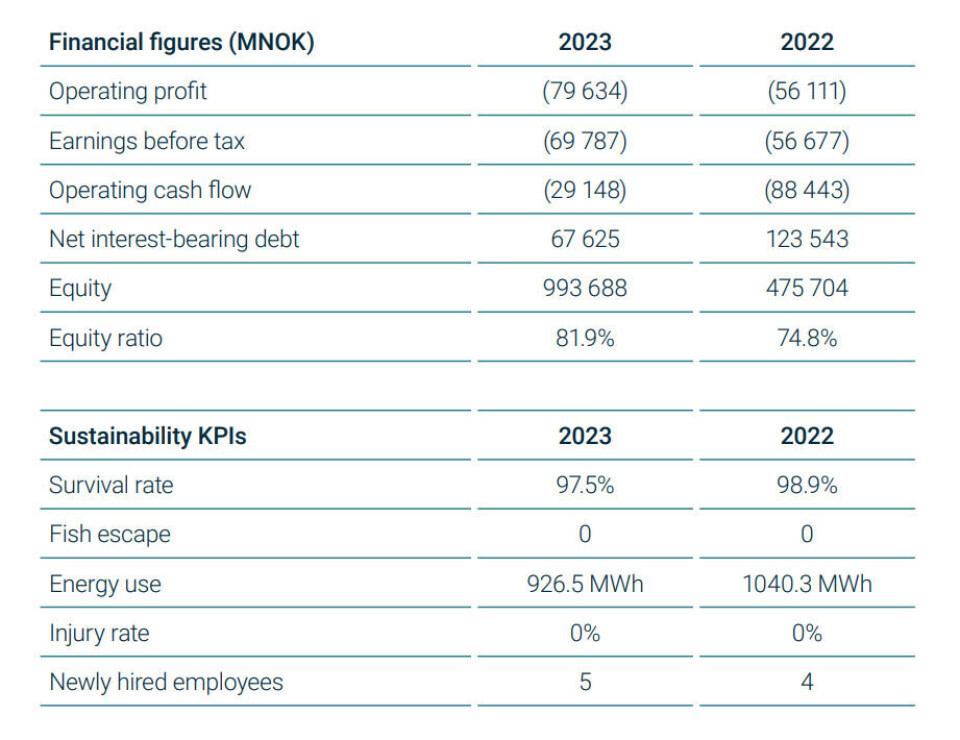
Land-based fish farmer ‘ahead of schedule’ with pools
Andfjord Salmon will start concrete works early
Andfjord Salmon, which is building the first phase of a 40,000-tonnes-per-year land-based fish farm in Norway, is to commence concrete works for four large pools ahead of schedule, the company said in an operational update today.
The salmon farmer already has one completed pool at Kvalnes on the island of Andøya that it has used as proof of concept and to produce a generation of fish that had a 97.5% survival rate.
For the current build-out phase, Andfjord Salmon will complete four pools, bringing the total to five. Excavation of the pool pits was completed in late January. Since then, preparations for pool construction, including establishment of a facility that will produce the pool components, have been successfully executed. The concrete works will now commence ahead of schedule.
Gradual increases
The company targets an initial production capacity of 8,000 gutted weight tonnes at Kvalnes from 2025, building up to 40,000 gwt through gradual increases between 2025 and 2030.
Two other ongoing workstreams – tunnels for transporting water to and from the sea, and a harbour area built with spoil from the tunnels and fish pools - are also progressing as planned. This is shared infrastructure that will support a future production of 40,000 gwt.
“The tunnel progress is good. The character of the bedrock is solid and in line with the pre-construction analyses we conducted,” said chief executive Martin Rasmussen.
The company’s update accompanied the publication of its annual integrated report, which can be found here.
1 kWh per kilo
Andfjord Salmon’s patented flow-through technology supplies a continuous flow of 100% seawater warmed by the Gulf Stream. Water is pumped from a depth of 40 metres, which the company says means that the temperature is considerably more stable than what would be expected at corresponding depths in net pens and follows seasonal patterns in ambient water temperature.
During the first six months of production in the proof-of-concept pool, more than 60% of daily temperature readings were in the range of 10–16°C, which is considered optimal for sea farmed salmon.
Andfjord Salmon’s laminar flow (in one end, out the other) pools are excavated into the bedrock and are below sea level, which reduces the amount of electricity required to pump water into the pools. It also has no need to heat or cool the water. These factors result in claimed energy consumption of just 1 kWh per kilo of salmon produced.

The company, which is not yet in a full production phase, made a loss before income tax for 2023 of NOK 69.8 million, compared to a loss of NOK 56.7m in 2022.
“The loss is in line with the board’s expectations for the current phase of the company,” the company said in its annual report.
It added that in June 2022 it stocked close to 200,000 smolts with an average weight of 120 grams in its first pool and harvested 540 gwt of a year later. Andfjord made NOK 37.3m from selling the fish.
“The next release of smolt will be when the next four pools are completed in 2025, followed by continuous production,” the company wrote.























































